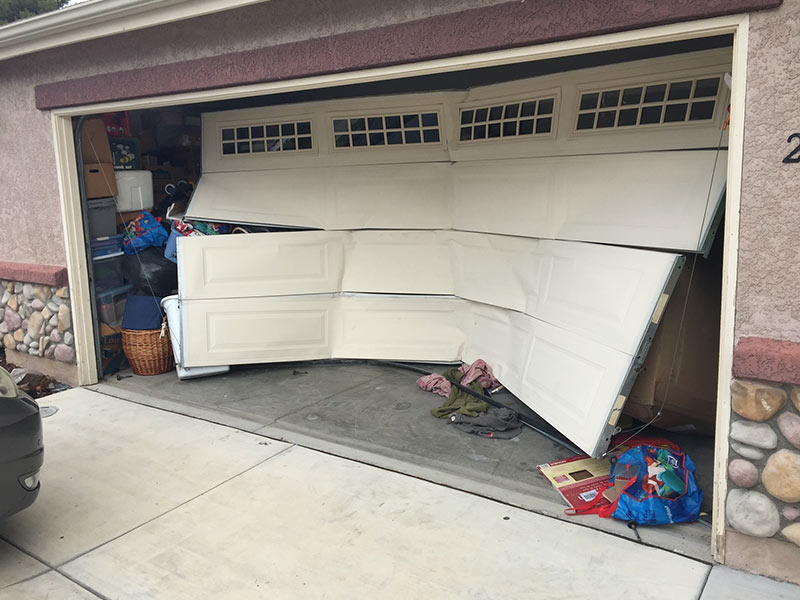Common Garage Door Issues and Just How to Fix Them
Garage doors are crucial for both safety and security and benefit, yet they usually offer a range of usual problems that can annoy homeowners. Troubles such as excessive sound throughout procedure, doors that fall short to open up or shut, misaligned tracks, and malfunctioning remotes can occur without caution. While some issues might show up uncomplicated to resolve, others might call for an extra nuanced understanding of garage door technicians. Resolving these problems effectively not just improves functionality but additionally lengthens the life of the door. One might wonder what steps are needed to take on these challenges successfully.
Noisy Garage Door Procedure
A noisy garage door operation can be a substantial resource of annoyance for home owners, frequently suggesting underlying mechanical issues. Such disruptions may stem from different reasons, consisting of worn-out rollers, loosened equipment, or not enough lubrication. Determining the source of the sound is critical for effective resolution.
Over time, these parts can weaken, leading to grinding or squeaking sounds as the door moves. Additionally, loose bolts or screws in the door mechanism can develop rattling noises throughout operation.
An additional contributing factor is inadequate lubrication of the door's moving parts. Using a high-quality lubricant to the tracks, springtimes, and rollers can significantly diminish friction and noise. Property owners ought to perform this upkeep regularly to maintain ideal efficiency.
Finally, the garage door opener might also produce sound because of its age or mechanical concerns. If the noise continues despite attending to other variables, seeking advice from a professional for an extensive evaluation and prospective fixing may be essential.
Door Will Not Open or Close
Experiencing a garage door that will not open up or shut can be incredibly discouraging and commonly indicates a breakdown within the system. Several variables can contribute to this issue, and recognizing the source is essential for effective resolution.

Next, inspect the safety and security sensing units situated at the base of the door. These sensing units can become misaligned or obstructed by debris, preventing the door from operating properly. Tidy the sensing units with a soft cloth and ensure they are lined up.
Furthermore, the garage door's interior elements must be assessed. Issues such as a busted springtime, worn-out rollers, or a harmed opener can restrain movement. If any parts appear to be harmed, it may be recommended to consult a professional for repairs.
Misaligned Tracks
(Excellence Guaranteed)Misaligned tracks can significantly interfere with the smooth operation of a garage door, resulting in functional failures such as uneven movement or total immobilization. This concern typically emerges as a result of a range of aspects, consisting of damage, unintentional impacts, or incorrect setup. When the tracks are misaligned, the rollers can not relocate freely, which not just strains the motor yet likewise poses safety and security threats.
If you discover any discrepancies, it is important to deal with the concern without delay. Thoroughly tap the track back right into its right setting making use of a rubber club or a similar tool, ensuring it is straight and level.
Normal upkeep, including cleaning up the tracks and guaranteeing rollers are in great problem, can protect against future misalignments. By attending to misaligned tracks promptly, you can bring back the performance of your garage door and enhance its durability.
Broken Springs
Amongst the different elements of a garage door system, broken springs are just one of one of the most typical concerns that can dramatically restrain its capability. Garage door springtimes are essential for stabilizing the weight of the door, permitting smooth opening and closing. When a spring breaks, it can lead to a door that is hard to run or, in many cases, entirely unusable.
There are two primary sorts of springs: torsion springtimes, which are installed over the door, and expansion springs, discovered on either side. Signs of a damaged springtime consist of a door that won't open, a noticeable gap in the springtime, or a loud sound during operation. Trying to run a garage door with a broken spring can create more damage to the door or the opener.
Repairing busted springtimes is not a do it yourself project; it needs specialized devices and competence as a result of the high tension involved. It is recommended to get in touch with an expert specialist that can securely this replace the springtimes and make certain the door is appropriately balanced. Routine maintenance and evaluations can assist avoid spring failings and prolong the life-span of the garage door system.
Remote Issues

The first step is to inspect the batteries in the remote. Change them if they are weak or dead. If the remote still stops working to run, examine the garage door opener to ensure that its sensing units are tidy and unblocked. Dirt, particles, or misalignment might prevent the signal transmission in between the remote and the opener.
Interference from other electronic devices can likewise hamper remote functionality. Guarantee that neighboring devices, such as wireless routers or cordless phones, are not triggering disruptions. garage door service. If disturbance is believed, try relocating these tools better far from the garage door opener
In some instances, the remote may require to be reprogrammed. Get in touch with the producer's guidelines to reset the push-button control and integrate it with the garage door opener. If all else stops working and the remote continues to malfunction, consider speaking with an expert specialist for a detailed assessment and potential replacement of the remote or opener.
Verdict
(Friendly Experts)In recap, typical garage door problems can dramatically affect performance and security. Addressing noisy operation includes lubrication and tightening hardware, while issues with opening or closing need evaluation of power sources and sensing units. Misaligned tracks can be remedied with modification, although busted springs require specialist intervention. Remote malfunctions typically arise from weak batteries or interference, which can be settled via replacement or reprogramming. Proactive maintenance and prompt repair services can ensure optimum performance and durability of garage doors.